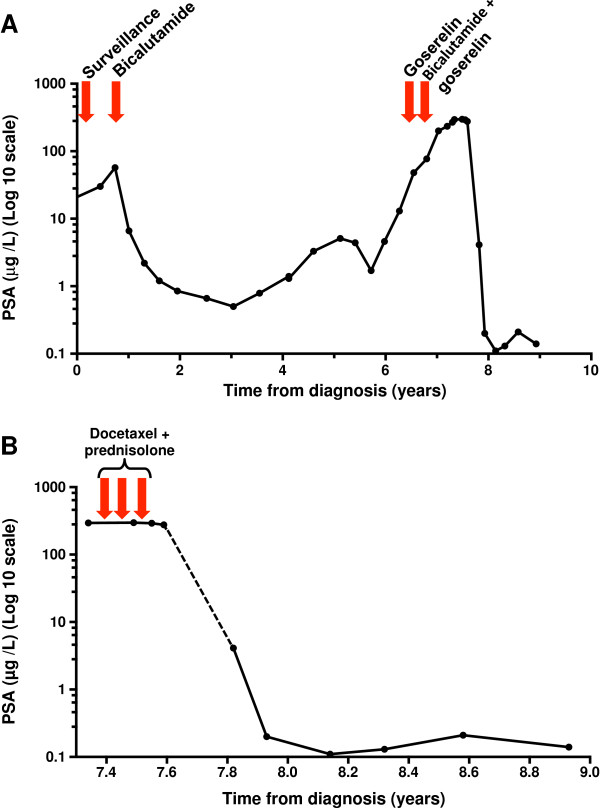Figure 3.
Line plots of change in serum prostate-specific antigen with time. (A) Change in serum prostate-specific antigen from diagnosis (log 10 scale). The patient achieved almost 6 years of disease control with androgen-deprivation therapy before developing a castrate-resistant state. The prostate-specific antigen can be seen to initially rise despite bicalutamide, then subsequently to rise despite a switch to goserelin, and finally despite maximum androgen blockade (bicalutamide plus goserelin). The patient then went on to receive three cycles of docetaxel plus prednisolone chemotherapy. A dramatic and sustained fall in prostate-specific antigen was observed 4 months after last receiving chemotherapy. This section of the plot has been expanded in Figure 3B for clarity. (B) Change in serum prostate-specific antigen (log 10 scale) in relation to chemotherapy. The prostate-specific antigen remained stable during chemotherapy (>250μg/L) and for at least 34 days following the last dose. However, at follow-up 4 months following his last dose of chemotherapy, his serum prostate-specific antigen had fallen to 4.1μg/L. When last seen, his latest prostate-specific antigen reading was 0.14μg/L, 18 months since his last cycle of chemotherapy. Abbreviation: PSA, prostate-specific antigen.

